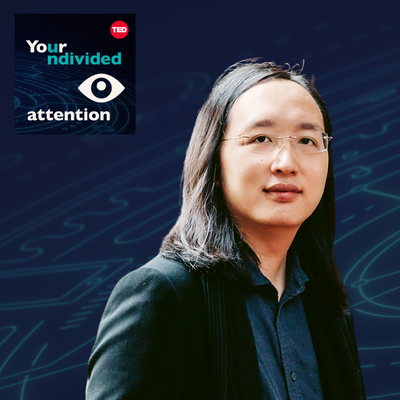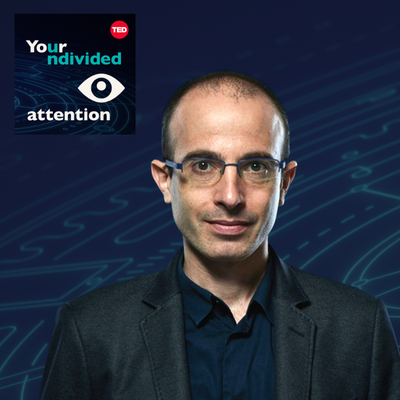Episode 49 | Mar 10, 2022
The Dark Side Of Decentralization with Audrey Kurth Cronin
Is decentralization inherently a good thing?
These days, there's a lot of talk about decentralization. Decentralized social media platforms can allow us to own our own data. Decentralized cryptocurrencies can enable bank-free financial transactions. Decentralized 3D printing can allow us to fabricate anything we want.
But if the world lives on Bitcoin, we may not be able to sanction nation states like Russia when they invade sovereign nations. If 3D printing is decentralized, anyone can print their own weapons at home. Decentralization takes on new meaning when we're talking about decentralizing the capacity for catastrophic destruction.
This week on Your Undivided Attention, we explore the history of decentralized weaponry, how social media is effectively a new decentralized weapon, and how to wisely navigate these threats. Guiding us through this exploration is Audrey Kurth Cronin — one of the world’s leading experts in security and terrorism. Audrey is a distinguished Professor of International Security at American University, and the author of several books — most recently: Power to the People: How Open Technological Innovation is Arming Tomorrow’s Terrorists.
Clarification: in the episode, Tristan refers to a video of Daniel Schmachtenberger's as "The Psychological Pitfalls of Working on Existential Risk." The correct name of the video is "Psychological Pitfalls of Engaging With X-Risks & Civilization Redesign."
Major Takeaways
We're witnessing the capacity for catastrophic destruction being decentralized. Decentralized 3D printing means anyone can print their own weapons at home. We're democratizing access to drones, iPhone hacking tools, CRISPR gene drives, and facial recognition software — without significant regulation. What compounds the threat is how these technologies can be combined in powerful and unpredictable ways.
In December of 2021, a video was posted to TikTok that called for a “National Shoot Up Your School Day." It invited students across the United States to commit acts of violence at their schools. The video went viral. While there were no mass shootings that day, it scared many students from going to school. In this sense, social media can be considered a decentralized weapon.
There are fascinating parallels between dynamite and social media. Initially, dynamite was available on street corners; today, social media is available to everyone with internet access. Dynamite inventor Alfred Nobel initially believed he was offering the world an unequivocal benefit; this echoes the public sentiments of many tech leaders. Both dynamite and social media need smart regulation, but there's where the parallels break down: the regulation of dynamite was driven by the railroad was eventually driven by wealthy and influential railroad companies, whereas today’s social media behemoths tend to resist the regulation that would alleviate their harms. Alfred Nobel went on to endow the Nobel Peace Prize, whereas we've seen tech leaders leave the industry but take little leadership to address its consequences.
Decentralization isn't inherently or exclusively a good thing. For example, there are benefits and downsides to the decentralization of the capacity to broadcast online. We gain an explosion of independent voices, and lose the capacity for trusted gate-keeping.
There may be a temptation to respond to the threat of catastrophe with over-regulation and a surveillance state. Hence the power of the bowling alley metaphor — the two gutters are catastrophe and dystopia, and we must find the safe and democratic middle path.
In the words of Daniel Schmachtenberger from Your Undivided Attention episode 36, we must pair the power of Gods with the love, prudence, and wisdom of Gods. Therefore, institutions focused on national security must have an interest in cultivating the 'wisdom of Gods.'
This topic is dark. Friend and environmentalist Paul Hawken doesn't read climate news after 4pm. Know your boundaries and help take care of those around you.
According to Audrey, our current moment is defined by the intersection of three trends: mobilization, reach, and integration. Specifically, our moment is a manifestation of the intersection between 1) mobilization through social media and other forms of communication, 2) increased reach, via quadcopters and other types of projections of force, and 3) systems integration, where AI and other tools can be used to give unprecedented destructive power to small groups.
We also want to note the potential for info-hazard — philosopher Nick Bostrum’s term for a risk that arises from the dissemination of information that may cause harm. In that spirit, we wanted to share Audrey's 7-part framework for avoiding info-hazards:
Only discuss information and methods that people have already attempted, as described in reputable sources.
Never suggest specific new technological vectors that misguided people or malign actors could easily act upon.
Avoid giving specifics about tactics used in extremist attacks, unless those details have been widely reported.
Never sensationalize attacks or the people who have attempted them.
Avoid making arguments that feed into extremist conversations in dangerous ways.
Avoid alarmism; never inflate the overall threat of violence.
Don’t just admire the problem. Build frameworks and share collaborative solutions that offer hope.
Other recommended reading
Power to the People: How Open Technological Innovation is Arming Tomorrow's Terrorists
Audrey Kurth Cronin's latest book, which analyzes emerging technologies and devises a new framework for analyzing 21st century military innovation
Psychological Pitfalls of Engaging With X-Risks & Civilization Redesign
Daniel Schmachtenberger's talk discussing the psychological pitfalls of working on existential risks and civilization redesign
Policy Reforms Toolkit
The Center for Humane Technology's toolkit for developing policies to protect the conditions that democracy needs to thrive: a comprehensively educated public, a citizenry that can check the power of market forces and bind predatory behavior


